|
In Pakistan a National Park is an area of outstanding
scenic merit and natural beauty where the landscape, flora and fauna
are protected and preserved in a natural state. Public access for
recreation, education and research is provided for. Access roads
and other facilities should be planned so they do not conflict with the
main objectives of national parks. Hunting wild animals is
prohibited, as is firing gun or otherwise interfering with animals and
plants. Clearing land for cultivation, mining or allowing polluted
water to flow in National Parks is also prohibited. Under the
regulations, these acts may be allowed for scientific purposes or
to improve the park.
Following are the major National Parks of Pakistan:
|
|
Hingol National Park
It enjoys the position of being the largest National park of Pakistan.
Located on the Makran coast Baluchistan, it is 190km away from the
city of Karachi. 35 species of mammals, 65 types of amphibians and
reptiles and 165 birds are sheltered here. The Hingol National
park is also the home of 250 varieties of plants. There are some unknown
and unnamed varieties of plants too. |
|
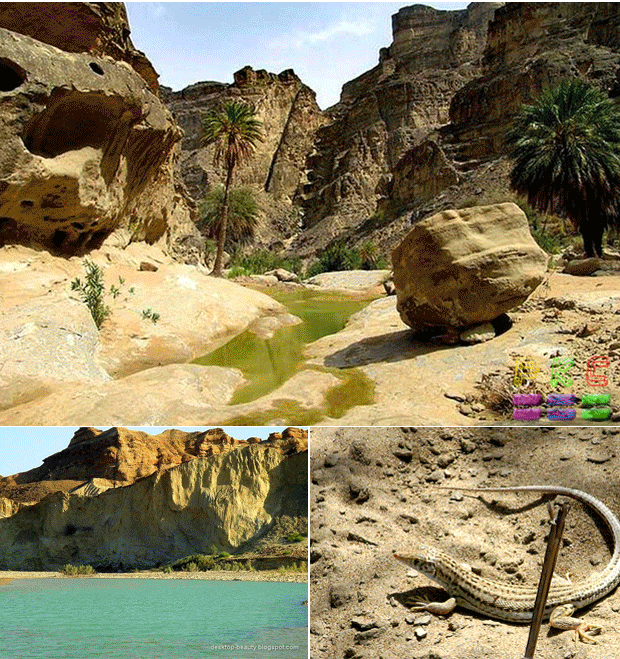 |
|
Hazarganji Chiltan National Park
Hazarganji literally means "Of a thousand treasures". In the folds of
these mountains, legend has it, that, there are over a thousand
treasures buried, reminders of the passage of great armies down the
corridors of history. The Bactrian, Scythians, Mongols and then the
great migrating hordes of Pashtuns, all passed this way. In the
Hazarganji Chiltan National Park, 20 km southwest of Quetta, Markhors
have been given protection. The park is spread over 32, 5000 acres,
altitude ranging from 2000 to 3200 meters. Nature lovers, students,
scientists and researchers are welcome to visit the park at any time of
the year. For overnight stay, accommodation is available at the Forest
Department Rest House located five kilometers inside the Park. Park
Rangers help the visitors to see animals. Access trails have been
developed in the park for visitors. A small museum of natural
history is located near the Park entrance. |
|
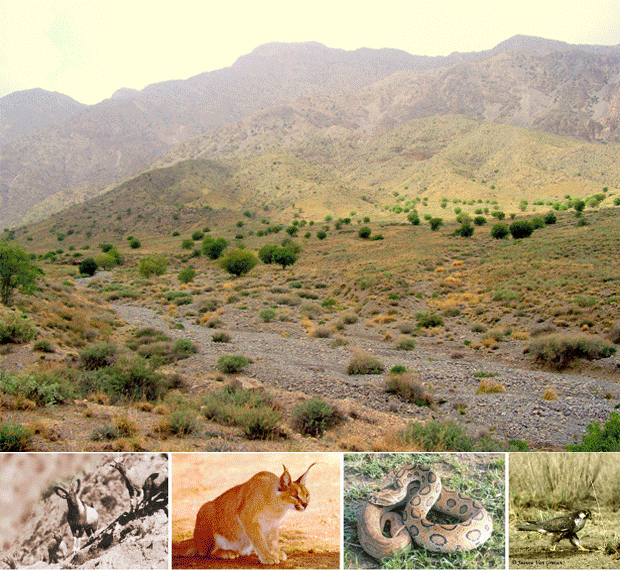
|
|
Kirthar National Park
Area wise it is the 2nd largest National park of Pakistan although the
first to be recognized as a wildlife sanctuary by the UN in 1975. It is
situated in the Kirthar mountain range and can be easily accessed from
Karachi. It houses 34 species of mammals, 58 genuses of birds and
various kinds of lizards and chameleons. Sadly many reptiles here have
become extinct however a number of snakes have survived. |
|
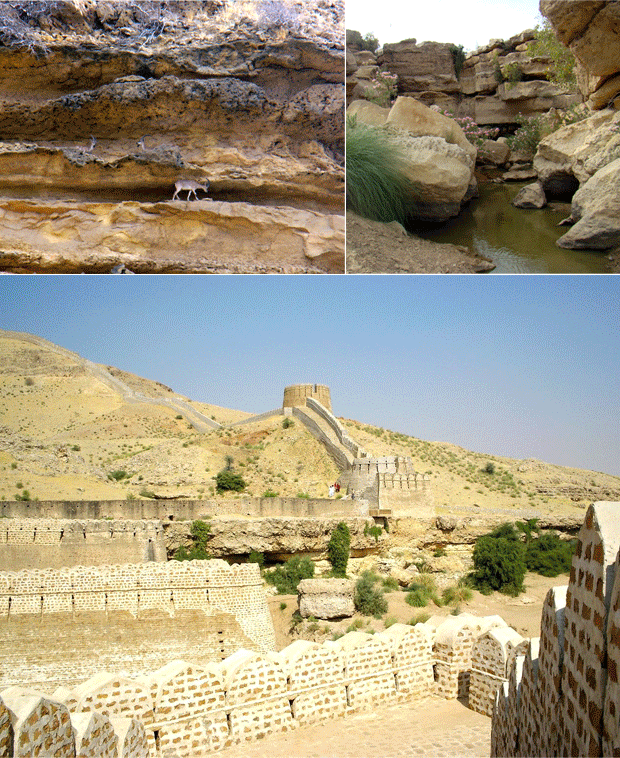
|
|
Lal Suhanra National Park
Lal Sohanra is a national park of Pakistan situated in Bahawalpur
district of Punjab province. Like the Changa Manga forest, it is
one of several forests planted by the British to provide raw materials
for railroad construction during their Raj. Lal Sohanra is spread over
153,000 acres (620 km2) and is notable for the diversity of its
landscape, which includes areas of desert, forest and water. Many
species of animals can be found throughout the park. These include
several wild animals of the desert such as wildcats, rabbits, bustards,
and deer. Reptiles in the park include the Monitor lizard, Russell's
Viper, Indian Cobra, Saw Scaled Viper, Wolf Snake, John's Sand Boa, and
Spiny Tailed Lizard. More than 160 species of birds are also present,
including the Houbara Bustard, Griffon Vulture, Crested Honey Buzzard,
Marsh Harrier, Hen Harrier, Laggar Falcon, Peregrine Falcon, Kestrel,
Eurasian Sparrowhawk, Egyptian Vulture, Lark, Shrike, Wheatear, and Barn
Owl. Patisar Lake, a large body of water in the center of the park, is
ideal for bird watching. In mid-winter, the lake is regularly home to
between 10,000 and 30,000 ducks and common coot. |
|
 |
|
Margalla Hills National Park
The Margalla Hills National Park is located in Northern Pakistan at the
foothills of the Himalayas and is a National Park. It is approximately
17,386 hectares (67.13 sq mi) in size.Instituted in 1980, the Margalla
Hills National Park comprises the Margalla Hills (12605 hectares) the
Rawal Lake, and Shakarparian Sports and Cultural complex. The hill range
nestles between an elevation of 685 meters at the western end and 1,604
meters on its east. The rock formations are 40 million years old, and
fossils of marine life abound every where bearing eloquent testimony
that the Margallah hills were at one time under the sea.
|
|
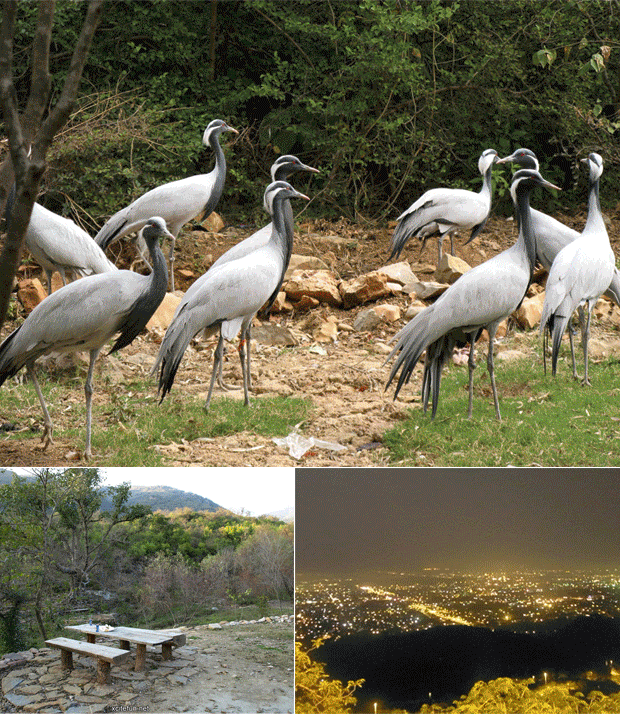 |
|
Ayubia National Park
Ayubia National Park (shortened as Ayubia) is a protected area of 3,312
hectares (8,184 acres) located in Abbottabad District, Khyber
Pakhtunkhwa province, northern Pakistan. It was declared a national park
in 1984. Ayubia was named after the late Muhammad Ayub Khan (1958–1969),
second President of Pakistan. The area supports temperate coniferous
forest and temperate broadleaf and mixed forest ecoregion habitats, with
an average elevation of 8,000 feet (2,400 m) above the sea level. The
park holds 104 species of plants. The main floral species are Cedrus
deodara, Blue Pine, Yew, Silver Fir, Horse Chestnut and Oak. Around 21
plants here belonging to 19 families are known for their medicinal
properties.
|
|
 |
|
Deosai National Park
It is located in the Deosai Plains of Skardu. Due to its high altitude
it is covered in snow for most of the year. A National park was
established in Deosai in 1993 to protect the endangered Himalayan brown
bear. This plan worked and 21 bears have bred in captivity raising the
number to 40 from 19.
|
|
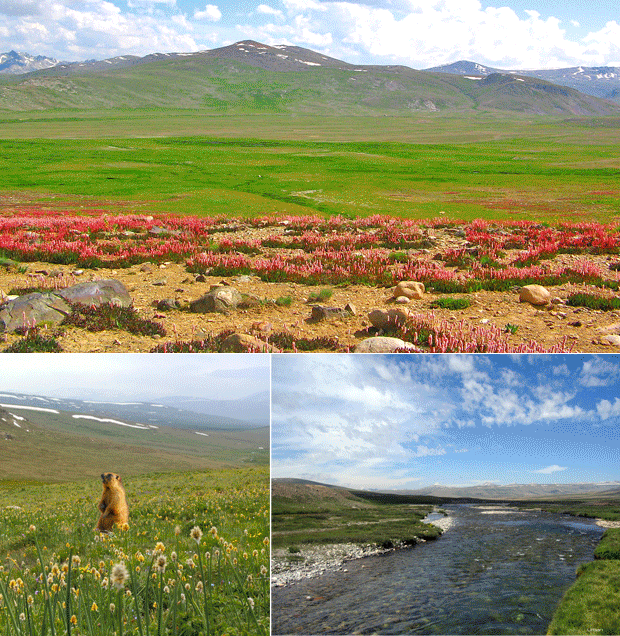 |
|
The Chitral Gol National Park
It is located in the picturesque valley of Chitral in the northern areas
of Pakistan. Located along the bank of River Chitral, it comprises of
three valleys, numerous glaciers which are a source of an 18m long
stream which eventually joins the river. A wide variety of flora and
fauna are found here. It is also a sanctuary for many wildlife species
like the Makhor goats, Himalayan griffin vultures, otters etc.
|
|
 |
|
Khunjerab National Park
Situated on the roof of the world it is a park of mesmerizing beauty. It
houses a wide variety of Alpine flora. It is also a natural habitat of
endangered species of Marco polo sheep, Himalayan Ibex, snow leopard.
|
|
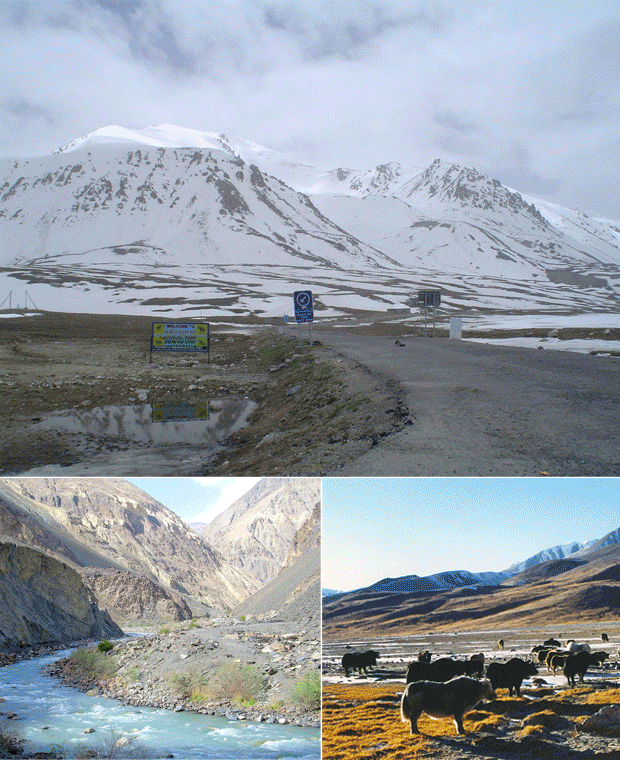 |